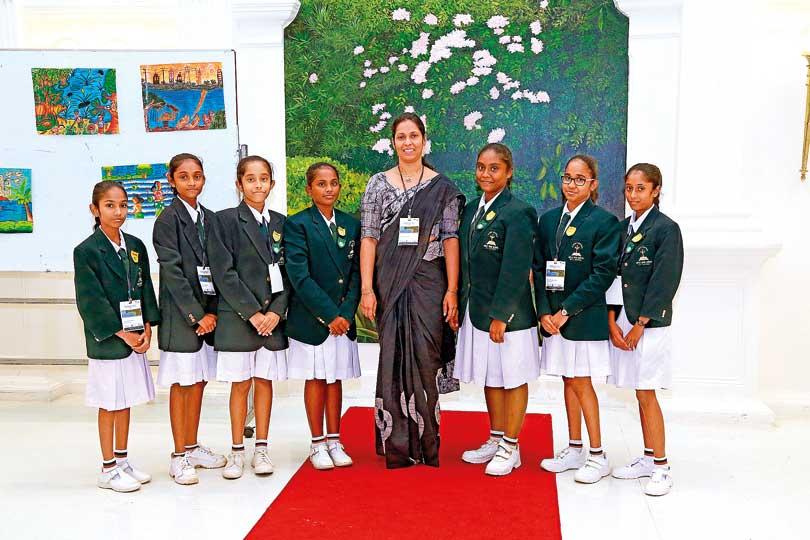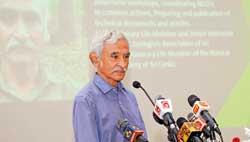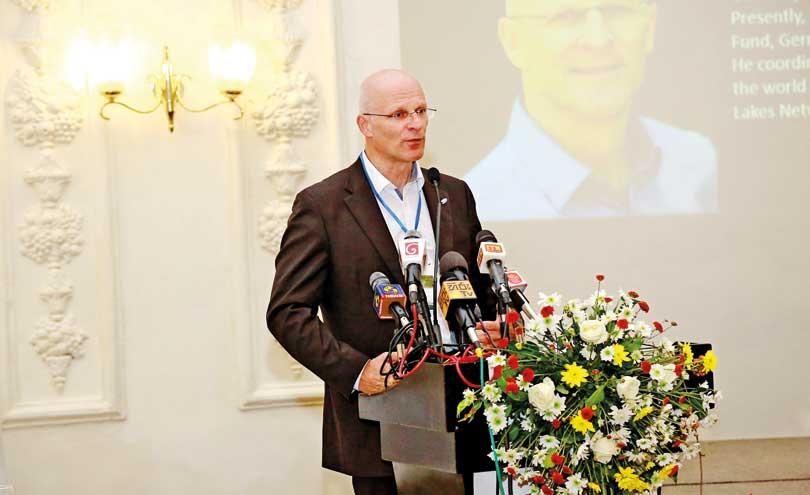13 Nov 2019 - {{hitsCtrl.values.hits}}

A few participants at the programme
 A conference on the Rehabilitation and Protection of Tropical Mangrove Ecosystems was held at the Galle Face Hotel recently, calling to action students, state officials as well as environmentalists and conservationists to protect the island nation’s wetlands. The International Conference on Mangroves was organised by EMACE Sri Lanka in partnership with the German Ministry of International Cooperation and several other organisations from the region, with the aim to bring in experts and best practices to tropical mangrove ecosystems in Sri Lanka.
A conference on the Rehabilitation and Protection of Tropical Mangrove Ecosystems was held at the Galle Face Hotel recently, calling to action students, state officials as well as environmentalists and conservationists to protect the island nation’s wetlands. The International Conference on Mangroves was organised by EMACE Sri Lanka in partnership with the German Ministry of International Cooperation and several other organisations from the region, with the aim to bring in experts and best practices to tropical mangrove ecosystems in Sri Lanka.
Agricultural Scientist and Executive Director of the Global Nature Fund (GNF) Udo Gattenlöhner speaking at the event noted that while 70% of the mangrove ecosystems were lost over the last 100 years, the involvement of youth in protecting mangroves remains vital. Gattenlöhner who has worked with Sri Lankan experts for many years noted that sometimes natural disasters reflect how important mangroves are in protecting coastal communities. “Following the December 2004 Southeast Asian Tsunami, this disaster somehow enabled us to meet and initiate this partnership, to continue the work on conserving the biodiversity and the preservation of fresh water resources, lakes and wetland ecosystems,” he said.
 Together with its partner organisations Nagenahiru Foundation and EMACE in Sri Lanka,GNF has implemented successfully, the three year EU Asia Pro-Eco II Post Tsunami Project. They also successfully completed reforestation and environmental education activities in the wetlands Madampe and Maduganga as well as at Bolgoda Lake. Since 2004, all three wetlands have been represented in the Living Lakes network. During his presentation Gattenlöhner illustrated how their partners worked in the region, especially in the Sundarbans, the largest mangrove on the planet. “Local people believing in the partnership (to protect mangroves) has been very important,” he added.
Together with its partner organisations Nagenahiru Foundation and EMACE in Sri Lanka,GNF has implemented successfully, the three year EU Asia Pro-Eco II Post Tsunami Project. They also successfully completed reforestation and environmental education activities in the wetlands Madampe and Maduganga as well as at Bolgoda Lake. Since 2004, all three wetlands have been represented in the Living Lakes network. During his presentation Gattenlöhner illustrated how their partners worked in the region, especially in the Sundarbans, the largest mangrove on the planet. “Local people believing in the partnership (to protect mangroves) has been very important,” he added.
Studies have found that mangroves store more carbon than rain forests, Gattenlöhner said adding that almost one-fifth of global greenhouse emissions caused by deforestation are due to mangrove clearance. This is mainly due to the immense potential of mangrove forest as a carbon sink storing greenhouse gases, particularly in its muddy soils. According to experts, one hectare can store about 1,000 tons of carbon.
Speaking on legal protection afforded by mangroves in Sri Lanka Environmental lawyer Jagath Gunawardana stressed that the bottoms of all water bodies of mangroves belong to the state, highlighting that laws are in place to protect mangroves such as Bolgoda, of which surrounding areas have recently been commercialised, posing a threat to its natural state. “There are no unprotected wetlands, all wetlands are afforded some degree of protection (in Sri Lanka)” he stressed.

Executive Director of the Global Nature Fund (GNF) Udo Gattenlöhner
EMACE had also organised an art competition where students from schools across the island attempted to capture the beauty of the Bolgoda Lake in their illustrations. A photography competition was also organised by EMACE to support the most discerning nature photographers in the country. Winners of both competitions were awarded prizes at the event.

28 Nov 2024 7 hours ago
28 Nov 2024 8 hours ago
28 Nov 2024 9 hours ago
28 Nov 2024 28 Nov 2024
28 Nov 2024 28 Nov 2024